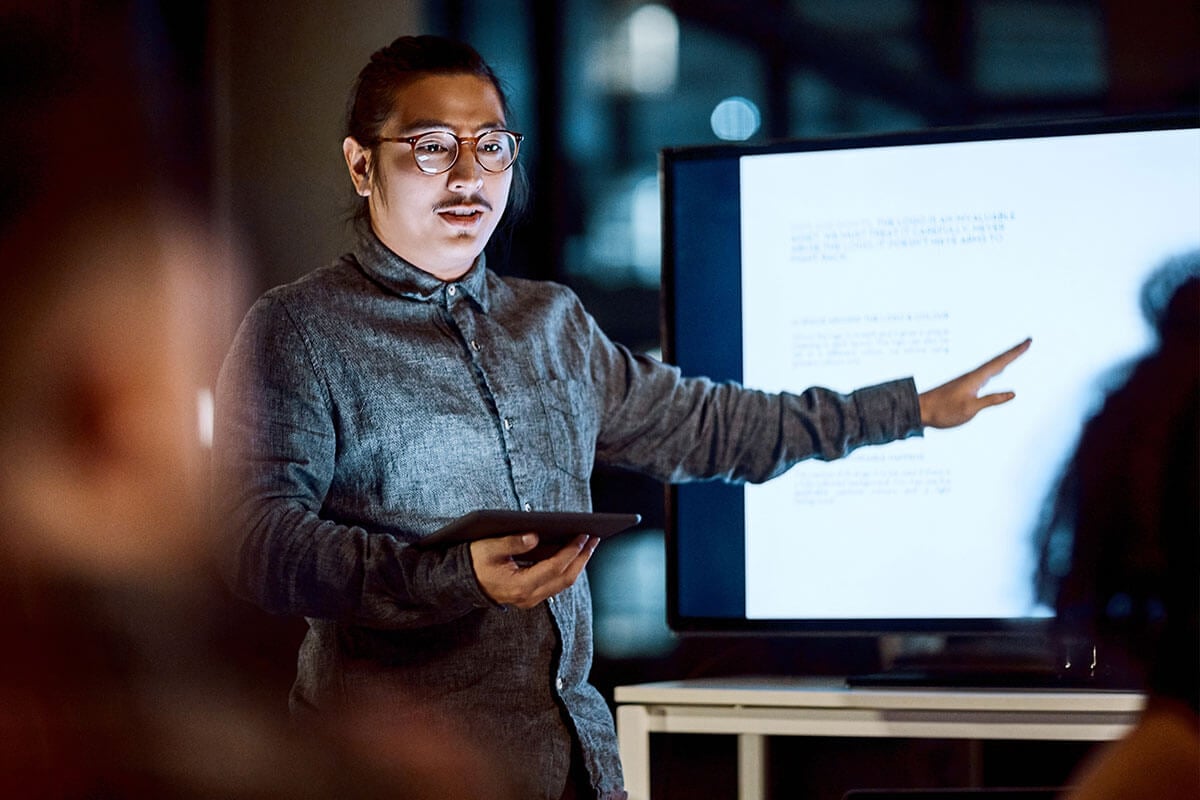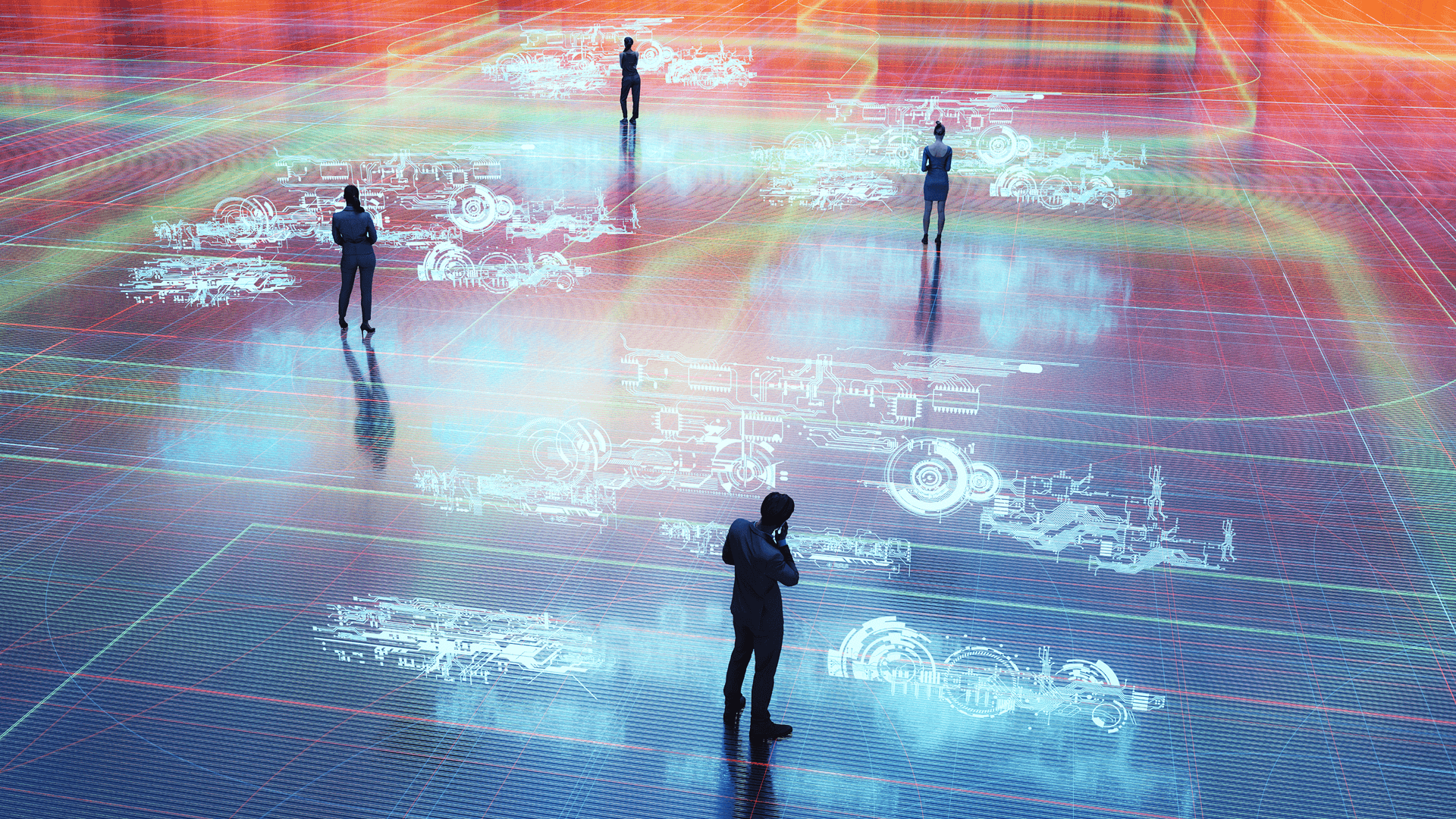
Achieving Business Agility
How to Build a Digitally Resilient Enterprise
The Change Agent
To create and then maintain a competitive advantage, organizations must build a digitally resilient enterprise, modernize their business and embrace transformation.
Building a Digitally Resilient Enterprise
A global pandemic. Rising inflation. Regional conflict. Supply chain disruption. Rest assured these won’t be the last disruptions businesses face. While the digital economy that delivers goods and services around the globe has changed lives for the better, it also puts more pressure on organizations than ever before. Disruptions in the flow of goods and services cost businesses time, revenue and customer loyalty. The brands that build a digitally resilient enterprise and can ride out the ebbs and flows of the market are poised to capitalize on disruption.
Building digital resilience goes beyond using technology to maintain or restore business continuity. It’s the ability of an organization to evaluate changing market conditions, apply decision intelligence, fully leverage its digital capabilities and quickly pivot the business to capitalize on the new environment.
In short, disruption can be viewed as a threat or an opportunity. When the COVID-19 pandemic struck, companies that had invested in digital transformation initiatives were not only better prepared—they had an edge over their competition. Take, for example, Sentara Healthcare, a nonprofit hospital and integrated health system. In the early weeks of the pandemic, Sentara’s hospitals, outpatient care centers and administrative offices were inundated with requests for COVID-19 information. Their healthcare providers were pulled away from providing care to screen patient phone calls and direct people to the most appropriate source of information. Sentara pushed for a digital solution. The result: An innovative digital healthcare experience centered around the deployment of a coronavirus chatbot assessment tool to manage the increased requests for information from concerned citizens.

of digital leaders say that their organization’s ability to compete in the market is greatly dependent on the flexibility of their technology architecture.1

Cultivating digital resilience and modernizing the business means upgrading legacy technology. That’s no easy feat. Legacy technologies and systems are deeply embedded into the day-to-day processes and workflows critical to running the business. There’s a lot to untangle. But it doesn’t need to be so overwhelming that it leads to indecision. In fact, organizations that fail to take action exacerbate the problems caused by technical debt, such as:
- User experience: Customers and employees expect seamless, personalized experiences with every interaction. Legacy technology and systems hinder the organization’s ability to deliver these exceptional digital experiences.
- Costs: It can be difficult to account for the added costs of maintaining legacy systems. Some of the costs that get overlooked include the need for more specialized staff—particularly those with experience in dwindling skills like COBOL—to troubleshoot technical issues and the constant need to patch security vulnerabilities.
- Missed opportunities: Siloed systems prevent organizations from harnessing the true power of their data with AI and machine learning. Also, legacy technology lives in silos and invariably causes downtime. Customers who can’t make a purchase go elsewhere.
These challenges inhibit business agility and weaken the company’s ability to respond to shifting markets and changing buyer behaviors. To create and then maintain a competitive advantage, organizations must build a digitally resilient enterprise, modernize their business and embrace transformation.
Market Perspective
Snowflake discusses how data enables digital resiliency and what organizations can do to future-proof their operations and prepare themselves for the next disruption.
How does Snowflake enable organizations to become more digitally resilient?
Freddy Guard (Snowflake): For any company on a digital transformation journey using data analytics, the number one challenge we hear about is data silos, which means disparate systems are housing different data sets for specific functional needs. Legacy systems prevent the organization from securely sharing data across different areas of the business or sharing with external partners. But from an analytics perspective, you must be able to mobilize that data at scale. The top mission for Snowflake is to mobilize data so you can run all your workloads on a single platform. If you think about the data ecosystem, the volume of data is enormous; you don’t even know some of the sources of data that might be coming online. Snowflake’s platform enables you to build a modern data ecosystem, where you can share data securely on a single, flexible platform.
Organizations are more open than ever to sharing data because they understand they’re better together versus trying to go it alone.

What are some of the ways that Snowflake’s Cloud Data Platform help organizations break down data silos?
FG (Snowflake): Most global enterprises have a multicloud strategy, meaning they leverage different cloud platforms for different workloads. Snowflake is cloud agnostic. So as long as you’re using Snowflake, you can leverage all of your different cloud platforms and share data across your organization. Some organization might be dealing with hundreds of suppliers, all with different cloud platforms. When they share data, it’s a very manual process to extract data from one source, clean it and then pipe it into another party’s cloud. With Snowflake, it’s all seamless. An organization can instantly share secure data with supply chain partners and other business partners regardless of their cloud platform.

What are some of the first steps organizations should take to become more digitally resilient?
FG (Snowflake): It really goes beyond just technology. First, start with a sound data strategy. Clearly define what you’re trying to achieve and secure senior-level sponsorship. These journeys aren’t easy to undertake, not because of the technology but because of the people and managing change. You need senior-level buy-in to drive that change. Secondly, from a technology perspective, think about your most robust technology stack. We don’t know what data sets are coming down the line in the future. Do you have a robust and flexible technology stack that can adapt to those data sets? Finally, there must be collaboration between the business and IT. The business needs to see value rather quickly along the journey. It can’t be 12 or 18 months before they’re able to realize value.
The ability to securely access data is critical in the event of a business disruption. What can organizations do to future-proof their operations and prepare themselves for the next disruption?
FG (Snowflake): Security is a top priority. You must be very secure in terms of how you’re dealing with the data sets. A global organization must consider things like the General Data Protection Regulation (GDPR) and ensure they handle data in a responsible manner. The organization must be very strong from a cybersecurity perspective, thinking about not only today but preparing for tomorrow. On the business side, no one imagined they’d be looking at pandemic data or the scale of supply chain data or data related to the geopolitical events in eastern Europe. These examples all point to the fact that global events that we haven’t anticipated will happen. Companies must figure out a better way to leverage data sets that goes beyond their four walls. How do you leverage data from your partners? How do you use third-party data and how do you get ready access to that data? An open ecosystem from a data-sharing perspective is key. Organizations are more open than ever to sharing data because they understand they’re better together versus trying to go it alone.
Our Perspective
TEKsystems leaders Tom Bondi, Brandon Carroll and Jay Mozo share how building agility and shaping mindsets offer the key to successfully modernizing the business.
Orchestrating for Agility
There are countless examples similar to Sentara’s of how the pandemic accelerated business process modernization and digital transformation efforts. A digital transformation strategy requires a clear roadmap. The companies that followed their plan created flexibility and resiliency so they could innovate and thrive through disruption. But, obviously, it’s not quite that simple—otherwise, every company could simply follow a plan and build digital resiliency. What is it that’s stopping them?
To start with, business modernization is a massive undertaking. The definition alone can give one pause. According to Gartner, modernization efforts address the migration of legacy to new applications or platforms, including the integration of new functionality to provide the latest functional innovations to the business. Modernization options include replatforming, rehosting, recoding, rearchitecting, reengineering, interoperability, replacement and retirement, as well as changes to the application architecture to clarify which option should be selected.2
The thought of modernizing the business tends to get very big, very quickly. The scope and scale aren’t something every company wants to tackle head-on. Organizations are aware of the need to modernize, but they don’t always know where to focus their attention. There isn’t a one-size-fits-all approach, but the most successful roadmaps include a focus on building agility and shaping mindsets.

Tom Bondi Executive Director, TEKsystemsWe’re at a point in the maturity curve where companies realize they need to be more forward looking about the unknown unknowns and must plan appropriately around that data set.

Agility Required
The key to modernizing the business and building digital resiliency starts with agility. The first step in achieving agility begins with leveraging data. That doesn’t sound revolutionary; organizations have been pulling in large amounts of data for decades. The key is that in the past, they weren’t really doing anything with it. Yes, their data teams could extract data from their database and create complex tables or charts, but they weren’t consistently applying AI and machine learning to generate actionable insights that optimized the decision-making process. They weren’t able to use data to sense and respond to changes in the market or truly understand what their customers want.
Take, for instance, the insurance industry, which has historically been predicated on brick-and-mortar storefronts—the traditional agent-on-the-corner models. Today, insurance firms use data to give them insight into improving the customer experience. The data they gather shows them how their customers’ buying behaviors—particularly millennial behaviors—changed. Customers want a digital experience. They want the ability to purchase insurance, modify coverage or submit a claim online. So, industry leaders pivoted the business to meet their customers where they are with digital solutions. They’ve created apps where customers can pay their bill or change coverage using their mobile device. In the event of an accident, customers can use their mobile devices to submit photos, expediting the claim process.
The insurance industry didn’t modernize the business overnight. Industry leaders looked at modernization as a journey. They built a foundation for business agility. They found partners who collaborated with them to design a roadmap that executed the vision and delivered real business value.
As you apply more data analytics, AI and machine learning through your modernization efforts, you can see more of what’s coming next, and then sense and react accordingly. That’s really what business modernization is all about.
 Brandon Carroll Executive Director, TEKsystems
Brandon Carroll Executive Director, TEKsystems

Modernize Mindsets
As organizations navigate their business modernization journey, they must continually evaluate progress and course-correct as needed. It’s critical to keep in mind that the ultimate goal of business modernization isn’t to simply revamp processes or replace legacy technology. That might be an outcome, but it can’t be the ultimate goal. To create a digitally resilient enterprise, the organization must think through how they evolve and optimize the business. Modernizing the technology and rethinking processes are key components, but they must not lose sight of how they modernize mindsets and equip their people to transform. Achieving modernization across all three areas—people, process and technology—creates a holistic, continuous transformation mindset that will future-proof the organization.
Shaping mindsets and fundamentally shifting the culture are critical to achieving digital resiliency. The organization must train itself to think differently. If your employees’ perspective is rooted in legacy systems, outdated ways of working and traditional behaviors, you’ll never fully transform the business. Employee mindset can’t be boxed in by the limited capabilities of your legacy systems. You must shift their mindsets and reimagine how your company tackles business problems to delight customers and achieve a competitive advantage. Ultimately, evolving the mindset of the organization must come from the top.
The biggest enabler for business agility is data agility. The biggest enabler for data agility is security.
 Jay MozoDirector, TEKsystems
Jay MozoDirector, TEKsystems

Business modernization must be a strategic, business-led initiative. IT is a key driver, certainly, but none of this works without a top-down approach that’s driven by the C-suite. Communications from leadership must clearly articulate the vision to encourage adoption. Leadership must model behaviors that demonstrate the mindset shift. And employees must be provided tools and training so they can hone their skills in a digitally resilient environment.
Every company, regardless of industry, is asking themselves how to do things better for their customer. How do they engage? How do they create better experiences? In other words, how well does the organization sense and respond to their customers’ worlds? Modernizing the business will enable digital resiliency and future-proof the organization with a continuous transformation mindset that will enable the business to thrive through the next disruption.
Achieving modernization across people, process and technology creates a holistic, continuous transformation mindset that will future-proof the organization.





